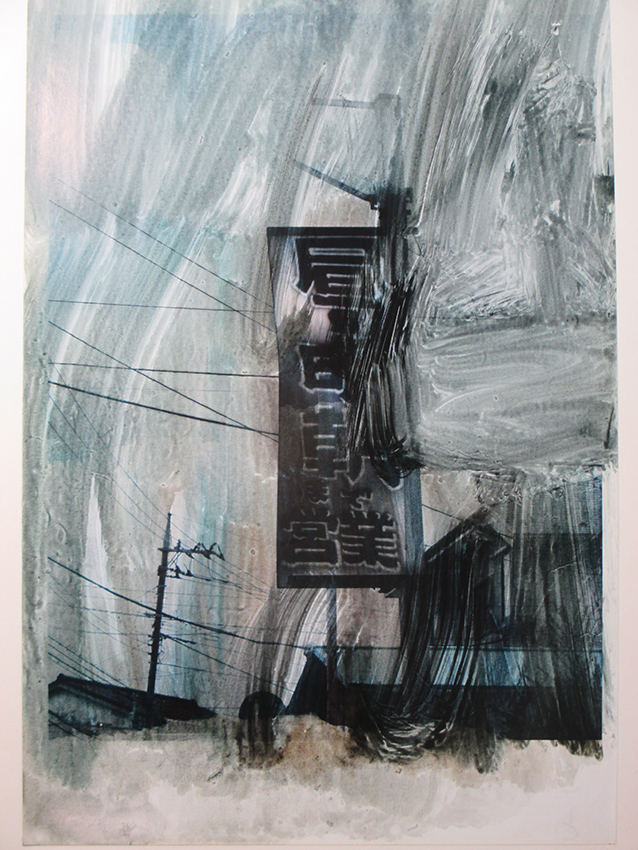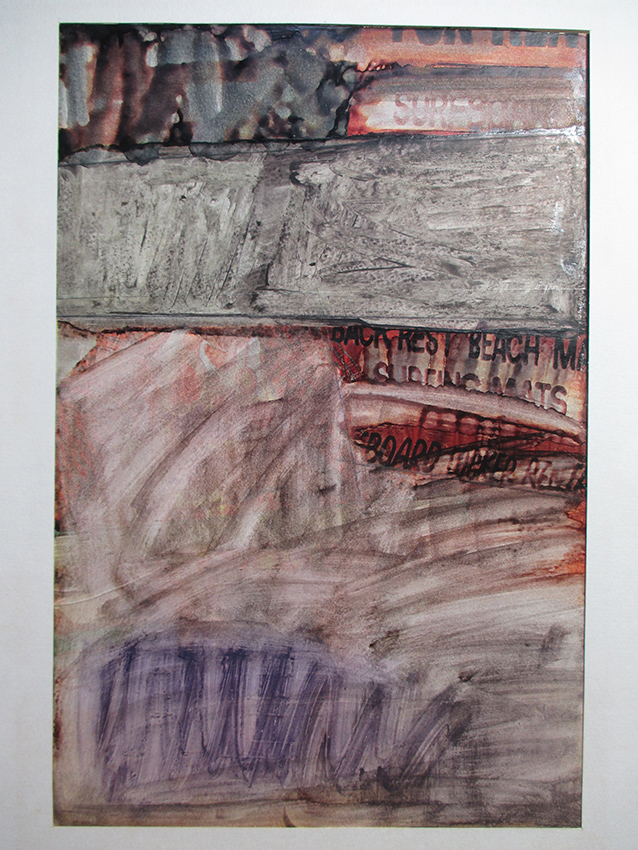Noboru Ohwada solo show Looking Through Water Stream
Looking Through Water Stream
大和田登 展
Noboru Ohwada solo show
2019年11月4日(月)~16日(土)
4/11/2019~16/11/2019
11月11日(月)休廊
closed on 11/11 mon.
15:00~20:00 最終日18:00まで
11月9日(土)レセプション18:00~
9/11/2019 Reception 18:00~
大和田登 展
Noboru Ohwada solo show
2019年11月4日(月)~16日(土)
4/11/2019~16/11/2019
11月11日(月)休廊
closed on 11/11 mon.
15:00~20:00 最終日18:00まで
11月9日(土)レセプション18:00~
9/11/2019 Reception 18:00~
Looking Through Water Stream
水の落下及び水の流れを通して視る事、
つまりは液体化する意識と映像
Liquid Consciousness, 視覚のLiquidization
水の落下及び水の流れを通して視る事、
つまりは液体化する意識と映像
Liquid Consciousness, 視覚のLiquidization
Weight
And
Time
Embody
Rewards
大和田 登 (Noboru Ohwada)
2019.10.5.
And
Time
Embody
Rewards
大和田 登 (Noboru Ohwada)
2019.10.5.
大和田登 水と意識と神秘
大和田登が今度は、水を使った個展を行うという。「Looking through water stream(水の流れを通して)」と題された同展では、液体化し流体化する意識の流れが主題だという。液体により溶けた映像を、実際の水瀧を画廊にインスタレーションして映し出す試みである。
思えば大和田登は写真の神秘と眼球構造を通した展示を過去に行った。前回の個展では、ジェイムズ・ジョイスの「ユリシーズ」を用い、同小説の実験的循環性を水の循環と絡めて表象した。ここにおいて大和田の興味は視覚認識作用から意識の流れの読解に移行してきたといえる。今回はその意識が明確な輪郭を伴って表現されるのではなく、そうではなくて、意識が溶解して液状化していく風景を切り取ったものとなるだろう。 水といえば、例のデュシャン《遺作》、《1.落下する水2.照明用ガスを与えられたとせよ》を即座に思い浮かべたが、作者によれば「それは当然ある」そうだ。 しかし、デュシャンの「落下する水」は瀧での明喩であってメタファーでも何でもない(大ガラスの抽象性、間テキスト性とは異なり)。実際の水でもなく、電飾だ。《遺作》はむしろスペクタクルな装置であり、その点、大和田の「流れる水」は意識の流れの暗喩であり、東洋的な思考を感じさせる。たとえば「飛鳥川の淵瀬」もしくは方丈記「ゆく川の流れ」のような。
ゆく川の流れは絶えずして
しかももとの水にあらず
淀みに浮かぶうたかたは
かつ消えかつ結びて
久しくとどまりたるためしなし
わたしたちの意識は一時もとどまってはいない。人生はつねに溶解していくともいえよう。アート作品はそこに錨をおろし、謎と神秘を明示するのだ。
森下泰輔(美術評論家/現代美術家)
Noboru Ohwada “Water, Consciousness and Mystery”
Noboru Ohwada is gong to employ ‘Water’ in this individual show titled ‘Looking Through Water Stream’ where the stream of consciousness which are liquidized and fluidized will be focused on. In other words, we will see his new experimental trial where images melted by liquid solvent are projected on the water cascade screen.
We witnessed Noboru Ohwada’s serial shows titled ‘Blinks’ between 2009 and 2015 where the aspects of mysticism of photography and the ocular structure were featured as the theme. In his previous 2017 show, Ohwada tried to express the concept of the experimental rotation connected with the theme of water circulation from ‘Ulysses’ written by James Joyce, one of the most famous and influential novels in the 20th century. In this show, his main concern has shifted to ‘stream of consciousness’ itself from the visual cognition. Here, what we encounter, will be the vision where consciousness is slowly liquidized and looses its distinct contours.
When I heard the main concept of this coming show from Ohwada, I immediately associated Marcel Duchamp’s E´tant donne´s ‘Given:1. The Waterfall, 2. The Illuminating Gas’ with water. According to Ohwada, he had actually the same idea as Duchamp. However, ‘falling water’ isn’t a metaphor but a simile, that is different from Duchamp’s earlier work, ‘The Large Glass’ where quality is more abstract and intertextual. In E´tant donne´s ‘Given’, water is not real but electric illumination therefore it can be said that E´tant donne´s, Given is just a spectacle device. On the other hand, water in Ohwada’s work is more metaphorical as ‘stream of consciousness’ .
We can feel a kind of asian philosophical idea from Ohwada’s work as well. For instance, the phrase ‘the deep pool in Aska River’ from Tsurezuregusa (徒然草, Essays in Idleness, also known as The Harvest of Leisure written in between 1330 and 1332.) and the following phrases from Hojoki (方丈記, literally "square-jo record” written in 1212),
‘The river never stops running, and the water is never the same as before. The bubbles are floating on the pool; some bubbles are disappearing and some are coming up; they will never be the same.’
Our conscious, never stops just the same as the river,and our life ceaselessly collapses and dissolve into unpredictably new forms. Only art can anchor and moor at the same point to disclose riddles and mysteries in this world.
Taisuke Morishita (Artist. Art Critique)
Director: Kentaro Chiba
http://www.kentchiba.com/chibaHP/images/curation/60NoboruOwada2019/TheTopofOhwadaNoboru2019.htm








